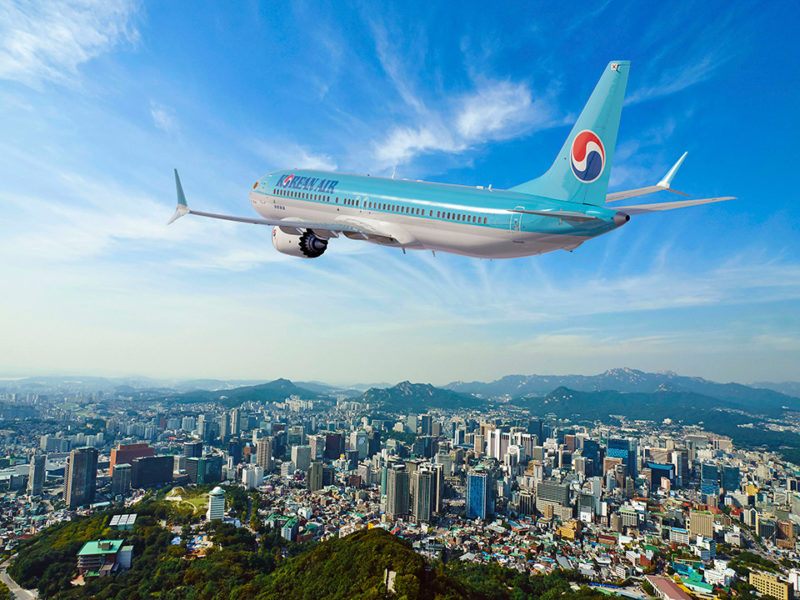Latest News

Korean Air 737 MAX. Photo: Boeing
Airlines considering purchasing or operating the Boeing 737 MAX have a new option available when considering what type of satellite communications hardware to equip on the aircraft. Miami, Florida-based avionics manufacturer Avionica received a Supplemental Type Certificate (STC) for its satLINK MAX Iridium satellite communications system for the aircraft model.
Under the new STC, the system can provide two flight deck air traffic services safety voice channels on the 737 MAX. One channel can provide Aircraft Communications Addressing and Reporting System (ACARS) FANS-1/A(+) capability and the additional channel can be used for cabin communications or dedicated datalinks.
“What this STC provides is the chance for 737 MAX operators to have an alternative to what’s available in the Boeing catalogue,” Avionica VP Anthony Rios told Via Satellite’s sister publication Avionics. “We find that equipping with satLINK MAX can provide major savings for an airline that has unique flight operational data acquisition needs.”
Icelandair, for example, selected the satLINK MAX aviONS onboard network server, avCM 4G cellular device and avSYNC quick access recorder (QAR) download equipment from Avionica for its fleet of 16 new 737 MAX in May 2017. The airline expects to see some significant savings with the equipment — potentially $4 million, Rios added.
Korean Air is the latest commercial carrier to select the Avionica option for a fleet of 55 Boeing 737s. The Asia-Pacific carrier is installing the satLINK MAX to comply with new flight-tracking requirements mandated by South Korea’s Office of Civil Aviation (KOCA) to take effect in 2018.
KOCA’s new flight-tracking requirements are in line with the provisions adopted by the International Civil Aviation Organization (ICAO) in March 2016 on the two-year anniversary of Malaysia Airlines flight MH370’s disappearance.
Officials representing both Airbus and Boeing at the Airlines Electronic Engineering Committee (AEEC) and Avionics Maintenance Committee (AMC) general session embraced new standards for avionics necessary to help make ICAO’s Global Aeronautical Distress Safety System (GADSS) concept of operations a reality.
“Korean often flies outside of VHF range, and they need this technology to comply with the Korea Office of Civil Aviation’s 2018 flight tracking mandate,” said Rios. “ICAO’s recommendations require position reporting every 15 minutes in normal operations. However, in abnormal operations, ICAO’s GADSS includes autonomous distress tracking recommendations for up to one minute. This is a requirement that existing high-frequency datalink systems are unable to meet reliably.”
Korean Air has already started installing the new boxes and expects to complete fleet-wide installation by the end of 2018.
This story was originally published in Avionics, a Via Satellite sister publication. It has been edited to better serve our audience.
Get the latest Via Satellite news!
Subscribe Now